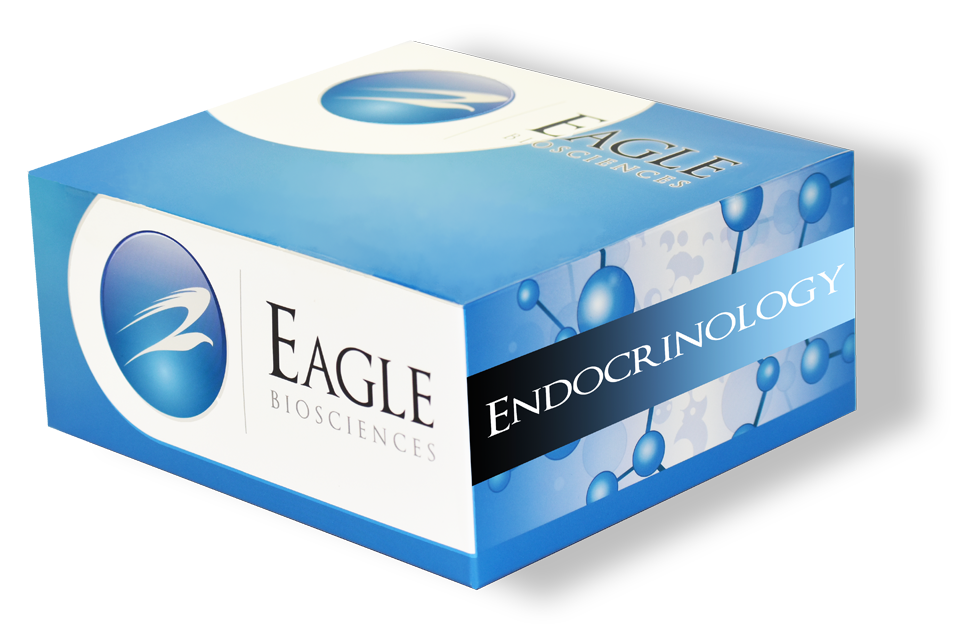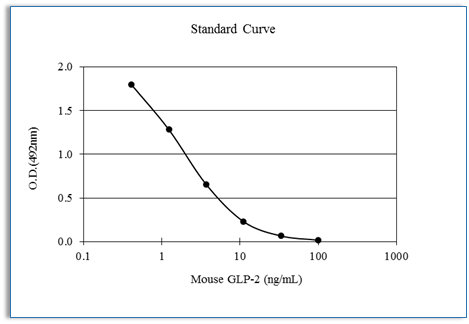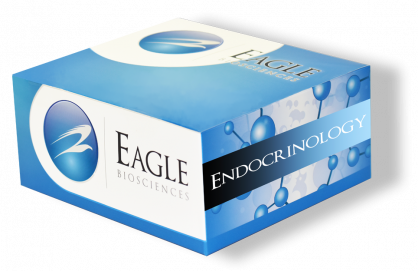Mouse GLP-2 ELISA Assay
The Mouse GLP-2 ELISA Assay is For Research Use Only
Size: 1×96 wells
Dynamic Range: 0.412 – 100 ng/mL
Incubation Time: 20 hours
Sample Type: Mouse serum, plasma
Sample Size: 25μL
Alternative Names: Glucagon-like Peptide 2
Specificity: This Mouse GLP-2 ELISA has high specificity to mouse GLP-2 and shows no cross reactivity with mouse glucagon and mouse GLP-1 even in the concentration of 300 pmol/mL.
Stability and Storage
Storage: Store all the components at 2~8°C.
Shelf life: The kit is stable under the condition for 12 months from the date of manufacturing. The expiry date is stated on the package.
Package: For 96 tests per one kit including standards.
Assay Background
The proglucagon gene is expressed in both pancreatic A cell and intestinal L cell. Tissue-specific posttranslational processing of proglucagon by the prohormone convertase produced the different proglucagon derived peptides (PGDPs) in both pancreas and intestine. The most notable pancreatic PGDP is glucagon, whereas the L cell produces several structurally related peptides, including glucagon-like peptide(GLP)-1 and GLP-2, as well as glicentin and oxyntomodulin, which contain glucagon sequence in their molecules. Among PGDPs, GLP-2 has recently been found to show intestinal epithelial proliferation.
Related Products
Human GLP-2 ELISA Assay
Rat GLP-2 ELISA Assay
Mouse GIP Active ELISA Assay Kit



